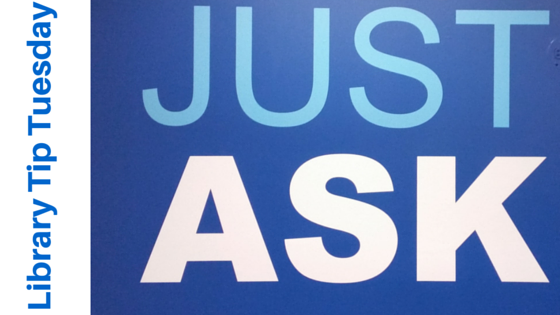Tip Tuesday: Peer-Review
Tip Tuesday is back, and we’re here show you how to use your library resources effectively.
Peer Review
Some questions come up more than others, and “How do I find peer-reviewed articles?” comes up most frequently of all. Let’s take a look at peer-review, and how we can use library resources to find peer-reviewed articles.
What is peer-review?
In short, peer-review is a process in which an author’s research is analyzed and scrutinized by his or her peers.
In more detail, peer-review happens when an author and his or her co-authors submit their work to a scholarly journal for publishing. If the paper meets the journals guidelines, the journal editor sends the document to reviewers (those would be the “peers”) for feedback. These reviewers may accept the article as is, accept on the condition that one or more edits are made, or they may reject the article outright. If the article is accepted, it is published. Check out this graphic from Understanding Science for a visual description.
Of course, peer-review is not without its detractors. Criticisms include allegations of shady science, discrimination, and bias against unpopular opinions. Despite these issues, peer-review is still held in high-regard within the scientific community. Throughout your academic career, you will be asked to find (and use) peer-reviewed research in your own writing.
What’s the difference between a “scholarly” resource and one that’s been peer-reviewed?
You can think of scholarly sources as those with, well, a scholarly bent. These resources will be academic in nature, are usually written for academics or researchers, and they will often include many, many citations. Always keep in mind that while all peer-reviewed publications are scholarly, not all scholarly publications are peer-reviewed.
How do I find peer-reviewed articles?
Finding peer-reviewed articles is much simpler than you might think. Many databases (such as ProQuest, Gale, and Academic Search Complete) have options to limit your search results to peer-reviewed resources. You may select the peer-reviewed option before beginning your search, or you may select it as a refining option on the results page. Evans Library’s discovery tool, Summon, has options for limiting to peer-review and scholarly sources on the results page.
Some databases (such as JSTOR and Engineering Village) do not make a peer-review option available because most (if not all) resources within them are scholarly and/or peer-reviewed. When using a database like this, you may want to use the search refining options to limit your results to “journal articles” or “articles” to find peer-reviewed results.
If you’re not sure about the types of materials available within the database you’re using, check out the database description on the A to Z Database list, or read the database’s about page.
But how do I know?
Peer-reviewed articles generally follow a standard format containing the following sections: abstract, introduction/background/literature review, methods, results, conclusions, and bibliography. Finding an article in this format is a good indication that you have found a peer-reviewed research article.
Even after limiting and refining your search, you might still be unsure about the quality of your results. When a journal’s credibility is in question, check out Ulrichsweb. Ulrichsweb contains publication information, including: publication schedule, content type, publisher, language, as well as reviews from librarians.
Additional Resources:
- What is peer-review, and how do I find peer-reviewed articles?
- Misha explains the peer-review process
- Finding articles on Evans Library’s website
- Anatomy of a scholarly article





